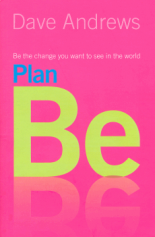The Bull And The Butterfly
A Parable about Power And Working For Change
I spend a lot of time around organizers and activists in my life. These days I am often approached by younger people (I can’t believe that I am considered mature now) who want to talk to me about social justice. They ask me a lot of questions about how I ended up where I currently am; doing the work that I do. I never have good answers for them.
I read an article that summarized some remarks made by Dr. Boyce Watkins in Kentucky. What stood out to me was a parable that he told to his assembled audience about a bull and a butterfly. The parable sparked thoughts for me about the nature of power and social change…
The bull, named Billy, wanted to trash a china shop because he had heard the owner was abusing neighborhood children.
But Billy resisted the urge, for fear that he would get in trouble. The butterfly, named Buddy, said he could do as much or more damage, a claim Billy found unlikely because he was so much bigger and stronger.
Buddy replied: “If you have the power but don’t use it, we’re about equal.”
What do you take away from this story? For Watkins, it is a parable about “a lot of people with power who aren’t using it.” He shared the story in the context of remarks urging a renewal of civil disobedience to raise awareness and to resist racism and oppression. It was a call to action for people to use the power that they have to make change.
I interpret the parable differently. To me the butterfly is actually akin to a number of the armchair philosophers/revolutionaries that populate too many of our movements for social transformation. At this point in my life, I actually find myself identifying strongly with the bull in the parable. I think that the bull is misunderstood. Let me explain.
Since I was a very young person, I felt compelled to address injustice: whether this was in my family, among my friends, in my community or the world at large. Yet I worried about finding legitimate outlets for channeling my rage and for directing my social action. I wasn’t afraid to exercise whatever minimal power I had at the time. I was struggling to figure out how to use that very limited power in the most effective ways.
As I grew up in New York City, I was incredibly lucky to be surrounded by wonderful touchstones. These people were patient with me, hard on me, but most importantly they listened to me. They were great role models for the limits and possibilities of lifelong organizing and activism. Yet I must admit that I write these words with retrospective admiration. When I was 14, 15, 16 years old, I really didn’t appreciate these people. I derided them as being too cautious and as lacking revolutionary zeal. The truth is that I was being seduced by another group of people — I’ll call them the butterflies.
These were the people who always had a ready quote by Fanon, Malcolm, Che or Douglass. They carried around tattered books that I had not read. These would send me scurrying to the library to find those exact texts. These were the people in my life who spent their time preaching about revolution and struggle. In retrospect, I know that the reason I was so enthralled was because they were mostly about talk. They rarely ‘acted’ on anything. My ideas were always brilliant around them because I never had to put them to the test. They were fun because they rarely participated in the actual hard work of making change.
While the bulls were doing the painstaking work of going door to door in Harlem to educate community members about affordable housing, the butterflies were lamenting the fact that “the people” were not being sufficiently engaged in “our” struggles. None of them ever went door to door. We talked a lot about “new” models of engagement when the old ones would have served us just as well. The key was to actually get out there and to talk to people; to put ourselves on the line; to risk being told to F-off.
Early on, these people dazzled me. They were shiny, brilliant, and looked the part of a committed organizer for social change. I was seduced by them and I was a major brat to the bulls who I proudly proclaimed were sell-outs because they had to be accountable to funders and to the “man.” Those were the days… I had not yet read Barbara Ransby’s seminal work about Ella Baker. That book had yet to be birthed.
Then one afternoon I won’t soon forget, as I spouted off about someone or other being a sellout, one of my touchstones, a bull, asked me a question that changed my trajectory.
“What have you built?” he asked. I must have looked perplexed. So he asked me again, “What have you built?”
I don’t know what you mean I answered.
“Come back and talk to me when you’ve figured it out” he told me.
I was so pissed off by that exchange that I left the office where I was working as a volunteer in a huff. I didn’t have an answer for him for another two years. It turned out that I hadn’t “built” anything. He was asking me when I had put myself truly on the line for something that I believed in. He was asking me when I had been brave enough to actualize the ideas and theories that I was always so quick to offer to and about others. He had been passionate about the issue of affordable housing and had “built” a community-based organization (where I was incidentally volunteering) to implement his ideas; to test them against his theories. Once I could answer his question, he truly became one of my greatest teachers. The butterflies began to quickly lose their appeal.
I still run across too many butterflies today and unfortunately too few bulls.
Nov 18 2010
http://www.usprisonculture.com/blog/2010/11/18/the-bull-and-the-butterfly-a-parable-about-power-and-social-change/



